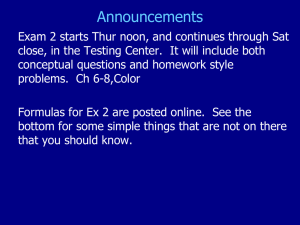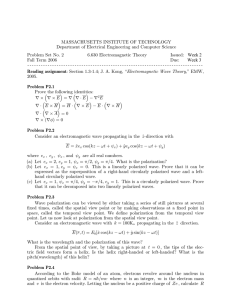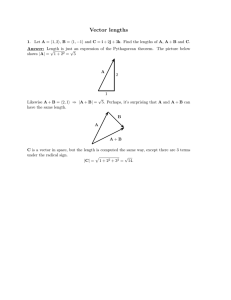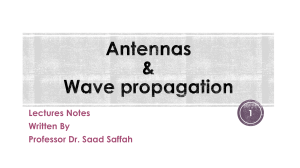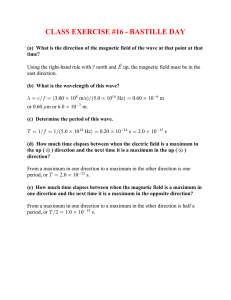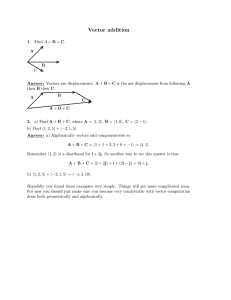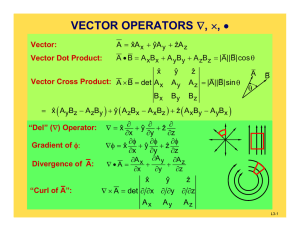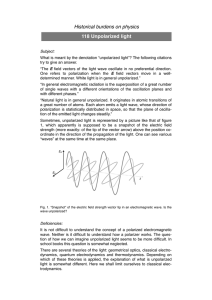Document 13436452
advertisement
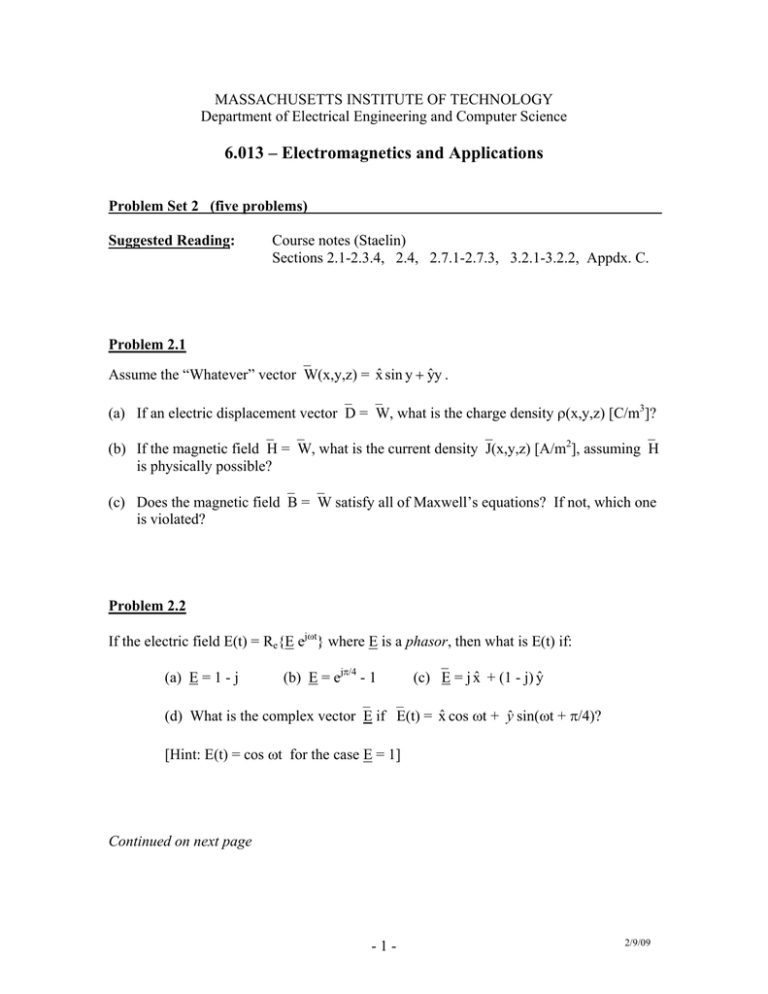
MASSACHUSETTS INSTITUTE OF TECHNOLOGY Department of Electrical Engineering and Computer Science 6.013 – Electromagnetics and Applications
Problem Set 2 (five problems)
Suggested Reading:
Course notes (Staelin)
Sections 2.1-2.3.4, 2.4, 2.7.1-2.7.3, 3.2.1-3.2.2, Appdx. C.
Problem 2.1
ˆ .
Assume the “Whatever” vector⎯W(x,y,z) = xˆ sin y + yy
(a) If an electric displacement vector⎯D =⎯W, what is the charge density ρ(x,y,z) [C/m3]?
(b) If the magnetic field⎯H =⎯W, what is the current density⎯J(x,y,z) [A/m2], assuming⎯H
is physically possible?
(c) Does the magnetic field⎯B =⎯W satisfy all of Maxwell’s equations? If not, which one
is violated?
Problem 2.2
If the electric field E(t) = Re{E ejωt} where E is a phasor, then what is E(t) if:
(a) E = 1 - j
(b) E = ejπ/4 - 1
(c) ⎯E = j x̂ + (1 - j) ŷ
(d) What is the complex vector⎯E if ⎯E(t) = x̂ cos ωt + ŷ sin(ωt + π/4)?
[Hint: E(t) = cos ωt for the case E = 1]
Continued on next page
- 1 -
2/9/09
Problem 2.3
(a) What is the frequency f (Hz) of the wave having the magnetic field:
⎯H = x̂ sin(107πt - 0.2z) + ŷ cos(107πt - 0.2z – 2.5π)?
(b) What is its wavelength λ (meters)?
(c) What is the velocity of light c in this medium?
(d) Find the corresponding⎯E(x,y,z,t) assuming μ = μo.
(e) What is the polarization of this wave? (e.g., “left circular”; polarization is usually
characterized by the behavior of the electric field vector)
(f) What is the shortest non-zero time delay τ(sec) that could be added to the x component
of the wave in order to achieve linear polarization? In this case, what is the direction θ
of the linear polarization relative to the x axis? A sketch may help.
(g) Polarization can also be characterized by complex notation. What is the polarization
of the z-propagating wave⎯E = (j -1)x̂ + (1 - j)yˆ ? (e.g., “left circular”.)
Problem 2.4
A 1-GHz uniform plane wave propagating in the +z direction in a medium μ, ε is
characterized by⎯E = xˆ 3.
(a) What is the time average intensity [W/m2] of this wave?
(b) What is the magnetic energy density Wm(t) [J/m3] at x = y = z = 0? What is the
electric energy density We(t) there?
Problem 2.5
σ=∞
Using the general expression for inductance L, find L for a
coaxial inductor of length D and short circuited at one end,
where the inner and outer radii of the two concentric
conductors are ri and ro, respectively, as illustrated.
L=
Λ μN ∫∫A H ida
=
i
i
- 2 -
ri
ro
μo
D
2/9/09
MIT OpenCourseWare
http://ocw.mit.edu
6.013 Electromagnetics and Applications
Spring 2009
For information about citing these materials or our Terms of Use, visit: http://ocw.mit.edu/terms.
